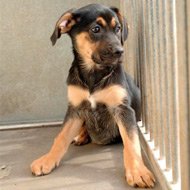
47,000 dogs left in council pounds
Over 47,000 owners have abandoned their dogs in the last twelve months, according to figures released by Dogs Trust.
In the annual Stray Dog Survey, the charity questioned local authorities across the UK and found that 47,596 dogs had been left abandoned by their owners in council pounds in the last year.
Sadly, dogs left behind in council pounds are put at risk of being put down after seven days as local authorities struggle to care for the vast numbers left behind.
The survey found that 5,142 stray dogs were put down last year, equating to 14 dogs a day or one dog every two hours.
Commenting on the findings, Adrian Burder, chief executive of Dogs Trust, said: “To learn that over 47,000 unclaimed and unwanted dogs are left in council kennels should shock us as a nation of dog lovers. Abandoning a dog is simply unacceptable and sadly, Dogs Trust’s famous slogan “A Dog is For Life” is as significant as ever – if you are not ready to care for a dog for its entire life, do not commit to becoming a dog owner."
Between 2014 and 2015, 102,363 stray and abandoned dogs were handled by local authorities, with under half being claimed by their owners.
The overall figure represents a drop on last year's figures (110,675), but still means that 280 strays are being found across the UK every day.
Adrian adds: "This year’s Stray Dog Survey shows that Local Authorities continue to pick up the pieces and have found themselves in the tough position of being forced to put healthy dogs to sleep for lack of space and resources.
"Stray dogs that find themselves at Dogs Trust are the lucky ones, as we will care for a dog for its entire life if needed, but not all are so lucky and treating a family pet as a disposable item has to stop."
To download the stray dog survey report, visit www.dogstrust.org.uk



 The RCVS has announced a new version of its 1CPD mobile app, with enhanced features for veterinary surgeons and veterinary nurses to record their continuing professional development.
The RCVS has announced a new version of its 1CPD mobile app, with enhanced features for veterinary surgeons and veterinary nurses to record their continuing professional development.